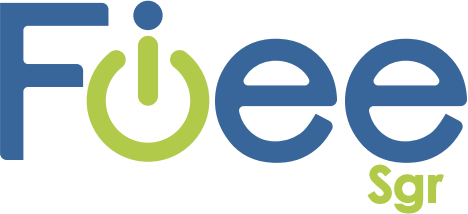Disclosure Regulation (UE) 2019/2088
Disclosure pursuant to Regulation (EU) 2019/2088 of the European Parliament and of the Council of 27 November 2019 relating to information on sustainability in the financial services sector
Art.3 – Transparency of sustainability risk policies
FIEE SGR S.p.A. (the “Company”), is among the first Italian asset managers to deal specifically with energy efficiency and, in this context, pays particular attention to sustainability issues and to the impacts of its investment activities. To this end, the Company signed the Principles for Responsible Investment adopted by the United Nations and integrated the assessment of sustainability risks, as defined by Regulation (EU) 2019/2088, as part of its investment process, in order to identify and manage those sustainability risks that are likely to create potential impacts for the Company and for the AIFs managed. Sustainability risk means an environmental, social or governance event or condition that, if it occurs, could cause an actual or a potential material negative impact on the value of the investment.
The Company integrates sustainability risks throughout the life cycle of its investment decision-making processes. This integration is outlined within the “Environmental Social and Governance Management System” (ESG Policy), the Company’s Risk Management Policy, and the rules of the AIFs it manages.
Firstly, the Company has set exclusion lists for investments in sectors or activities characterized by higher exposure to sustainability risks due to their specific features.
The identification, analysis and management of sustainability risks is integrated into the Company’s investment process also through the adoption of specific procedures which require the Company to identify, during the evaluation and selection of investment opportunities, sustainability risks that may be relevant in relation to the specific characteristics of the potential investment, the target company and the economic sector or geographical areas in which it operates. To this end, such processes require that external advisors carry out a due diligence to assess risks and opportunities, including those related to sustainability risks, before pursuing an investment opportunity. The results of such analysis are included in specific due diligence reports which are subjected to scrutiny by the management team, the risk management function and the Company’s Environmental & Social Officer. These reports are part of the relevant documents used by the Board of Directors to make decisions on investment opportunities, along with the risk report drawn up by the risk management function, which also highlights any sustainability risks associated with the potential transaction, and other elements of assessment.
During the holding period of an investment, the Company carries out a regular monitoring of sustainability factors based on information provided directly by the portfolio companies in relation to specific sustainability KPIs.
Finally, at the divestment stage, the Company assesses the evolution of the investee company’s environmental, social, and governance track record during the holding period, as well as the degree of the residual ESG risk.
Art.5 – Transparency of remuneration policies in relation to the integration of sustainability risks
The Company is required to adopt sound and prudent remuneration and incentive policies that promote proper risk management practices and that do not encourage risk taking that could be inconsistent with the risk profiles and rules of the funds it manages. In application of this principle, the Company’s remuneration policies do not encourage the assumption of sustainability risks.
In addition, in response to the integration of sustainability risks into the investment process, the Company has integrated qualitative ESG objectives into the variable compensation of the functions responsible for managing and developing sustainability issues within the investment portfolio.
Art.4 – No consideration of adverse impacts of investment decisions on sustainability factors
The Company does not currently take into consideration the negative effects of investment decisions on sustainability factors, nor has it established policies on the identification and prioritization of the main negative impacts on sustainability and their related indicators. Such stance reflects the difficulty of gathering, as of now, information needed to calculate all indicators and all metrics through which the Company could make a realistic assessment of the potential negative impacts of its investment activities on environmental and social issues, also in relation to employee, respect for human rights, anti-corruption and anti-bribery matters. The Company will re-evaluate its position annually in relation to the availability of data on negative impacts on sustainability factors and, in case it believes such information is available, will update its position through the website accordingly.
Disclosure update
|
Disclosure |
Publication/Update |
Explanation for amendments |
|
Art. 3 |
March 2021 |
First publication date |
|
June 2023 |
Update of internal procedures regarding ESG risk integration |
|
|
Art. 4 |
March 2021 |
First publication date |
|
June 2023 |
Update of disclosure according to regulatory requirements |
|
|
Art. 5 |
March 2021 |
First publication date |
|
June 2023 |
Update of Remuneration Policy |
